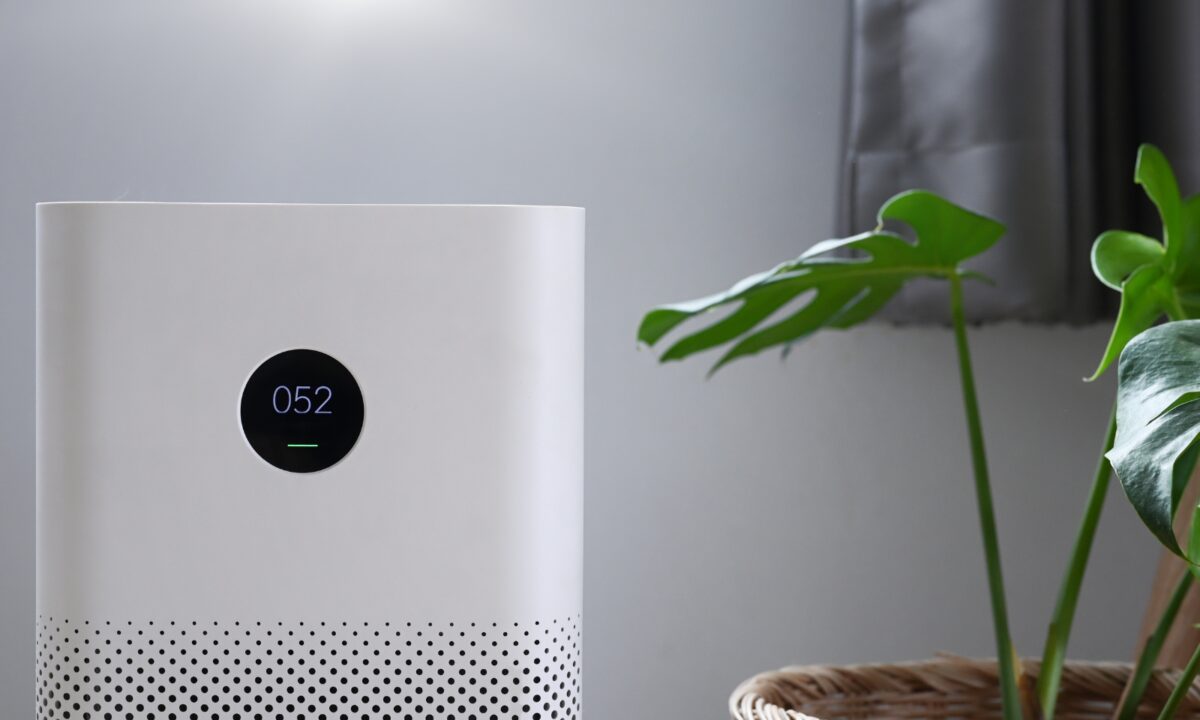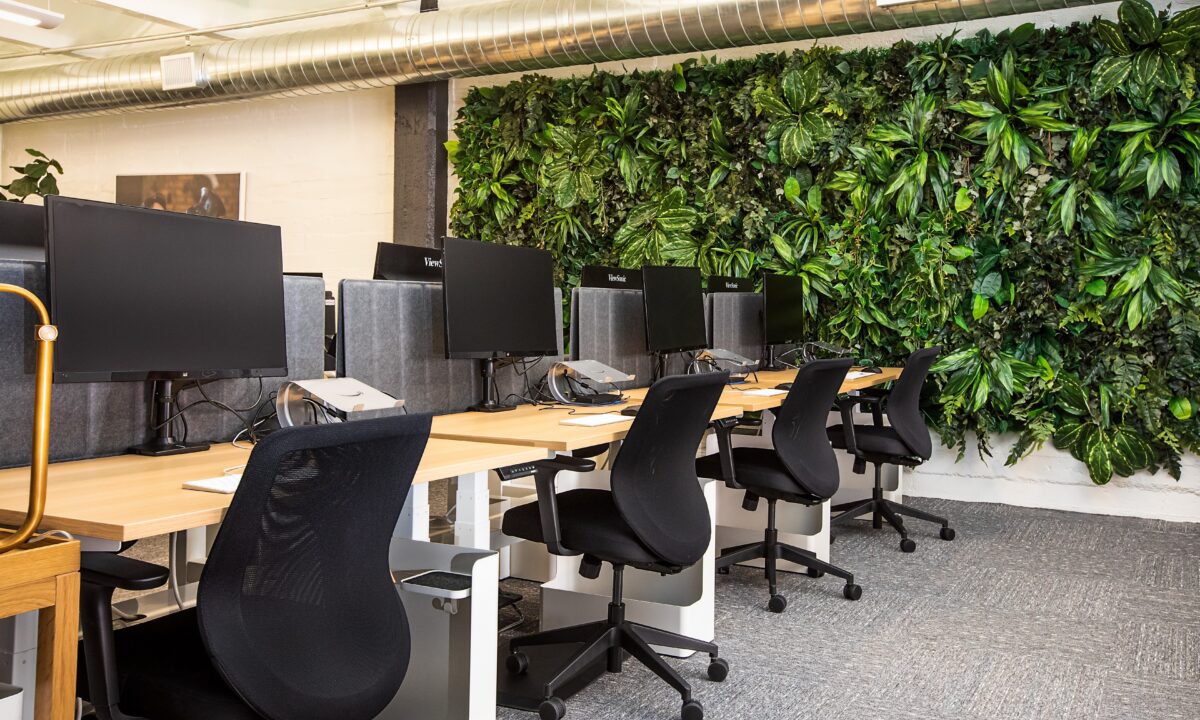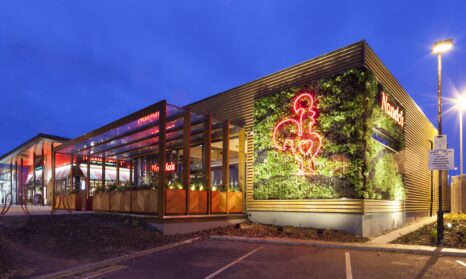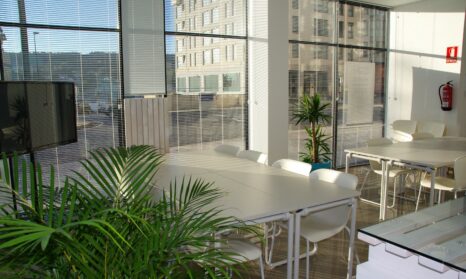5 ways your business can improve indoor air quality
In the first part of this blog, I outlined why we should be tackling indoor air pollution and shared some of the business benefits of doing so.
Here are some tips - from the simple to ones which require a bit more commitment - to help you achieve better air quality at your workplace. These actions can also be applied to homes!
Our five steps to improve indoor air quality:

- Monitor
Invest in indoor air quality monitoring to learn about air quality at your place of work and measure progress as you attempt to improve it. - Reduce
Speak to your cleaning services provider about instigating a low or zero-emission cleaning policy that uses natural cleaning products. - Avoid
If you are going to refurbish or refit your offices/stores or restaurants, at the very least specify healthy, natural materials with zero VOCs.
If you have a larger budget and are proposing a significant refurbishment then consider using a certification scheme such as SKA, or WELL Building certification to drive the higher standards. - Improve
If you have the budget you could explore the option of a ventilated living wall. Or install cutting-edge filtering technology to improve indoor air quality.
A less expensive option is to increase the number of indoor plants opting for those that are great for improving indoor air quality. Use the Nasa list of air-filtering plants. - Get outdoors more
This isn't about improving air quality indoors, it's about improving the quality of the air you breathe! As I discussed in my previous blog, air inside can be worse than outside.
Encourage outdoor walking meetings or lunchtime walks to increase time spent outdoors. You can check for routes that are away from highly polluted areas.
Ask employees to monitor how much time they spend outdoors before and after introducing initiatives to see if it increased time outside, and whether this has a positive impact on wellbeing.

Case study: Cundall’s healthy workplace
Cundall’s new London office at One Carter Lane was the first project in Europe to achieve the WELL Building Standard. It is also the seventh project in the world to achieve the WELL Standard (following six pilot projects). It puts the health and wellbeing of the occupants at the heart of building design.
This is one of the most innovative office fit outs around at the moment and achieved Gold in the WELL Standard certification. It has also achieved a SKA Gold and BREEAM Excellent Ratings, which shows that a healthy environment does not have to come at the expense of sustainability.
The key features that specifically address indoor air quality include:
- Healthy, natural materials with zero VOCs
- Low and zero emission cleaning policies
- Real time monitoring of local air quality including VOCs, CO2, PM10, PM2.5
- Ventilated green wall for air purification
- Variable air volume systems linked to occupancy densities with CO2 sensors
- Biophilic design via the use of natural materials and local planting
The additional construction cost of WELL is between 1 and 3% depending on how early it is considered. This represents approximately £200 per person to an employer and is good value for money.
Alan Fogarty, Sustainability Partner at Cundall, says: “WELL Building Standard made us focus on controlling CO2 levels in our more densely occupied spaces. We now have a system with CO2 sensors that allows air to be moved between rooms based on need and what is available.
We monitor indoor air quality using our IEQube, which we developed in-house. It tracks particulate levels, temperature, humidity and light levels.
Staff have responded really positively to our use of the WELL standard with people commenting that air quality is really good. In the first year, we noticed a 50% reduction in absenteeism.
With an increase in staff numbers from 165 to 210, we have noticed an increase in CO2 concentrations. We are looking for solutions, including installing a small ventilation unit in the building facade."
Looking to the future
The issue of air quality is not going away. A quick search of Google Play or the Apple store for air quality apps shows a multitude of options for real-time alerts on outdoor air pollution. The global indoor air quality monitor market is expected to double from around $2 billion in 2015 to more than $4 billion by 2022.
Experts are predicting that we will increasingly use this information to make important decisions like where to live, work or send our children to school - as well as where to spend our indoor leisure time. Customers will also increasingly be looking for products and services that can help them create a healthier indoor environment.
Learn more about improving indoor air quality during refurbishment with this case study from Intu's redevelopment of Broadmarsh shopping centre, or read about how we can support businesses with sustainable fit-outs.







